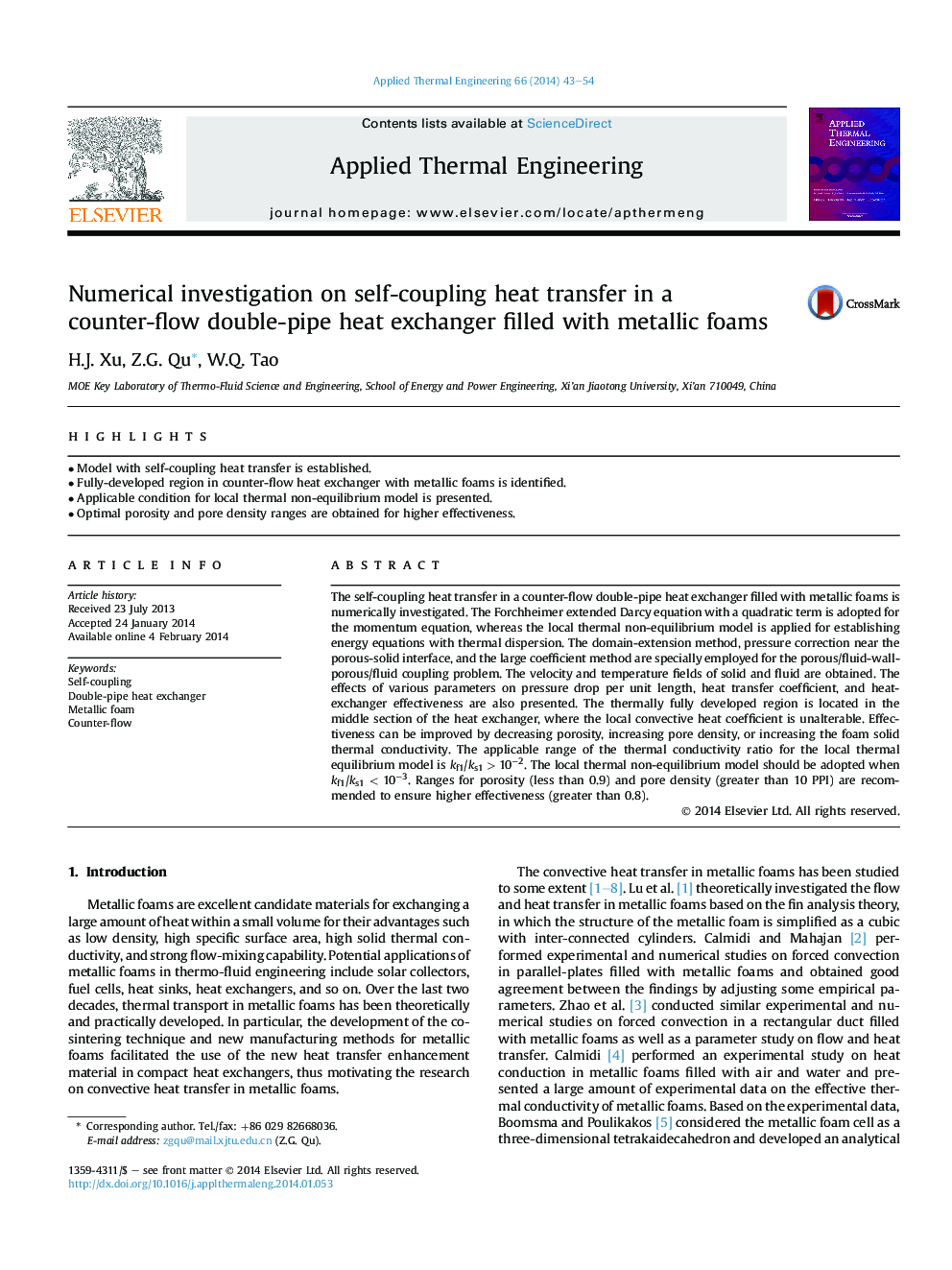| Article ID | Journal | Published Year | Pages | File Type |
|---|---|---|---|---|
| 646656 | Applied Thermal Engineering | 2014 | 12 Pages |
•Model with self-coupling heat transfer is established.•Fully-developed region in counter-flow heat exchanger with metallic foams is identified.•Applicable condition for local thermal non-equilibrium model is presented.•Optimal porosity and pore density ranges are obtained for higher effectiveness.
The self-coupling heat transfer in a counter-flow double-pipe heat exchanger filled with metallic foams is numerically investigated. The Forchheimer extended Darcy equation with a quadratic term is adopted for the momentum equation, whereas the local thermal non-equilibrium model is applied for establishing energy equations with thermal dispersion. The domain-extension method, pressure correction near the porous-solid interface, and the large coefficient method are specially employed for the porous/fluid-wall-porous/fluid coupling problem. The velocity and temperature fields of solid and fluid are obtained. The effects of various parameters on pressure drop per unit length, heat transfer coefficient, and heat-exchanger effectiveness are also presented. The thermally fully developed region is located in the middle section of the heat exchanger, where the local convective heat coefficient is unalterable. Effectiveness can be improved by decreasing porosity, increasing pore density, or increasing the foam solid thermal conductivity. The applicable range of the thermal conductivity ratio for the local thermal equilibrium model is kf1/ks1 > 10−2. The local thermal non-equilibrium model should be adopted when kf1/ks1 < 10−3. Ranges for porosity (less than 0.9) and pore density (greater than 10 PPI) are recommended to ensure higher effectiveness (greater than 0.8).
